Mazda is in a transition right now. They are not exactly full-blown premium yet, at least in terms of pricing, but they are also well above the consumer-oriented price range mass market-brand car buyers are familiar with. Because of that, we see things like this – a subcompact crossover that starts at P1.5M.
The Mazda CX-30 is just the second car released under Mazda’s next-gen lineup following the new Mazda3 last year. It slots in between the CX-3 and CX-5, though it may totally replace the CX-3. Being only the second car in the new generation, it’s no wonder it’s a Mazda3 on stilts, as cliché as it may sound. The addition isn’t that obvious though as both cars seem low on the ground with the CX-30 having 180mm of clearance vs the Mazda3’s 155mm. The interior was mostly carried over from the 3, with changes primarily done on the exterior to make it more distinct.
I love Mazda’s KODO design ethos and loved it more when they did the latest Mazda3. They removed the previous gen’s shoulder line and upswept character lines on the side in lieu of one shapely curve. The reflection on this curve guides your eyes all throughout the side profile. It’s subtle but dynamic, and further elevates the design of Mazda against its competition. The CX-30 went against this look, though.


As with most manufacturers, they put a cladding underneath to make it an official crossover that seems “rugged.” I have no qualms against that, it’s how big this cladding is at the side and rear that bothered me. It’s oversized on the wheel arches that it disrupts the elegant flow of the side curve. The tall cladding above the rocker panels on the doors also meant less of the shapely body we could see. That black side cladding goes around the rear to make up the whole bumper and doesn’t have any sculpting like in the CX-9, or the mix of cladding and body panel bumper like in the CX-5.
Another departure from the Mazda3 was the rear cabin space. The increased height gave way for bigger glass complimented with a quarter glass by the C-pillar resulting in more light for the rear passengers. Visibility for the driver in that area is still small though because of the thick interior panels for the pillars. Still I appreciate this improvement because it significantly decreased the claustrophobic and dark feeling when in the back. I also like to commend its readiness for families, having ISOFIX tethers with plastic covers so you won’t have a hard time looking for the latches.
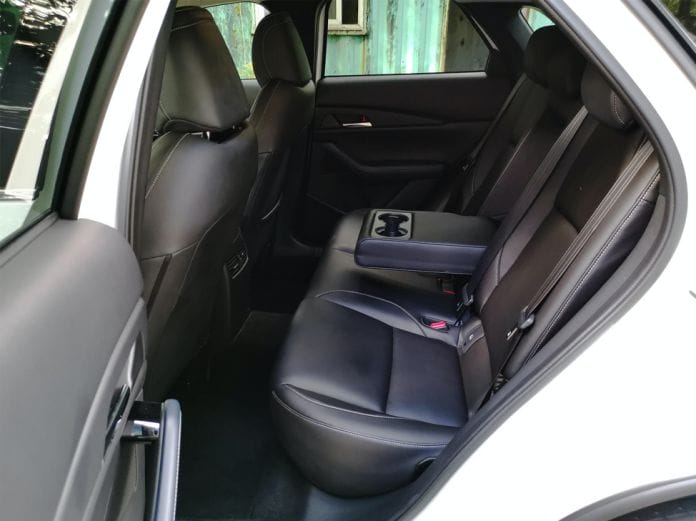
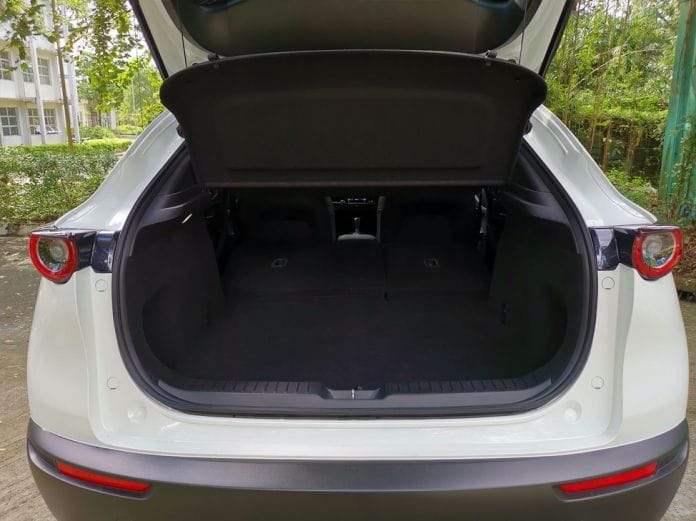
Driving the CX-30 is a totally different story. As biased as it may sound, it’s hard to find a fault in it. It’s quick off the line, can easily overtake thanks to paddle shifters (FWD Sport variant and up), has ride comfort that’s firm but not jarring, and takes corners well. I’ve said before that the Suzuki Vitara is a good drive, and the Chevrolet Trax’s strong point is its drive, too; but the CX-30 is on a different level. It’s very refined. Even going up the parking ramp of Trinoma made me smile because it’s all too easy. You don’t need to go high speed to find joy with the CX-30.
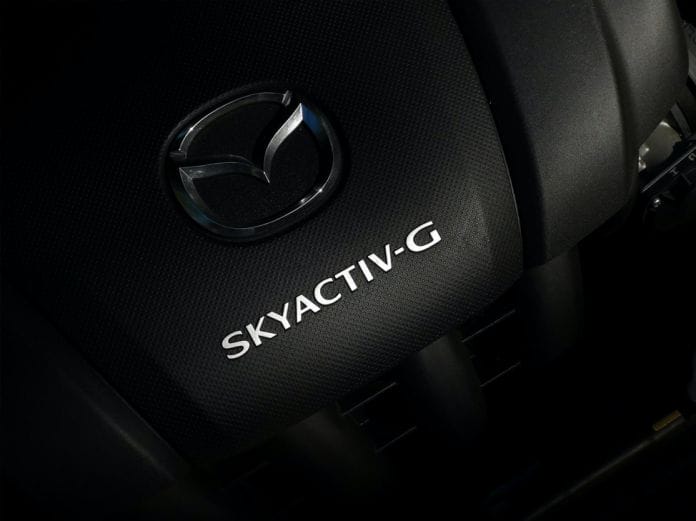
Under the hood is a 2.0L naturally aspirated Skyactiv-G with a 6-speed automatic. Combined, it sipped gas at 6.6km/l in traffic, but on a fine day with more space on city roads it can go up to 13km/l, something that lighter crossovers with more fuel efficient engines had a hard time reaching. Mazda really maximized the physics with their Skyactiv-G that they can juice every single drop out of it.
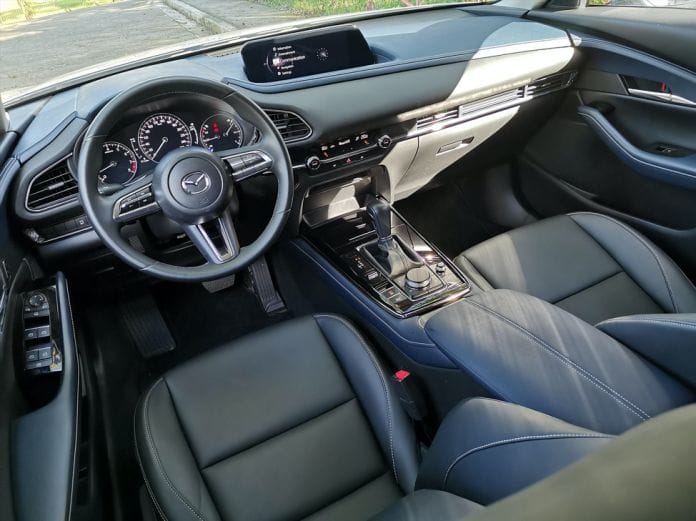
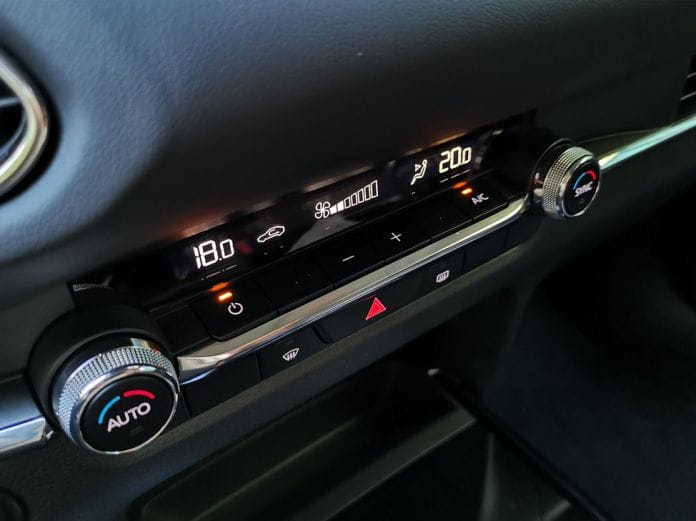
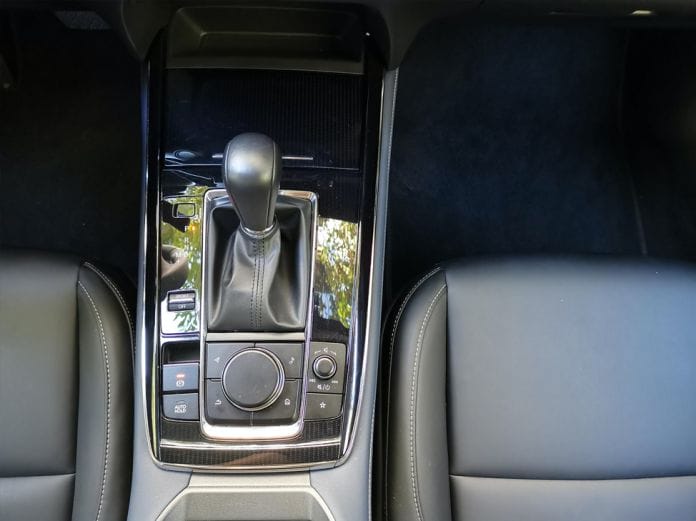
Add to that the tangible prestige of my CX-30 FWD Sport test unit. All contact points are clad in leather. The steering wheel, door panel armrest, center console, shifter, seats, even the resting place for the driver’s right leg has the lightly padded leather trim. The buttons click softly and the rotary knobs are tactile at every notch, avoiding an accidental overturn when you’re adjusting them on the go. I especially love the vertically placed aircon controls at the center. It’s a lot easier to operate especially when the car is on the move. The aircon itself needs a bit of tweaking though. The disparity between fan 1 and 2 is a bit too much that oftentimes I found myself getting hot at 1, but 2 can be too cold, especially at night. You can adjust the thermostat but the problem is the amount and speed of air being blown, not the temperature.
This FWD Sport is also P300,000 more than the FWD Pro and that premium includes paddle shifters, adaptive headlights, bigger 18-inch wheels, leather upholstery, dual zone climate control, rear vents, auto-dimming rear view mirror, smart keyless entry and standard cruise control. All variants come with 7 airbags, ABS with EBD, Dynamic Stability Control, and rear view camera.
With everything said and done, the question remains – is the Mazda CX-30 FWD Sport worthy of its P1,790,000 price tag for a subcompact crossover? Yes. I know there are cheaper crossovers with the same features or a bigger crossover for that price. iPhone users know what I’m talking about. There are phones out there with better specs for the same amount and yet people flock to the Apple product year after year. Why? It’s the execution and how it all works together, something that Mazda has always aced lately.
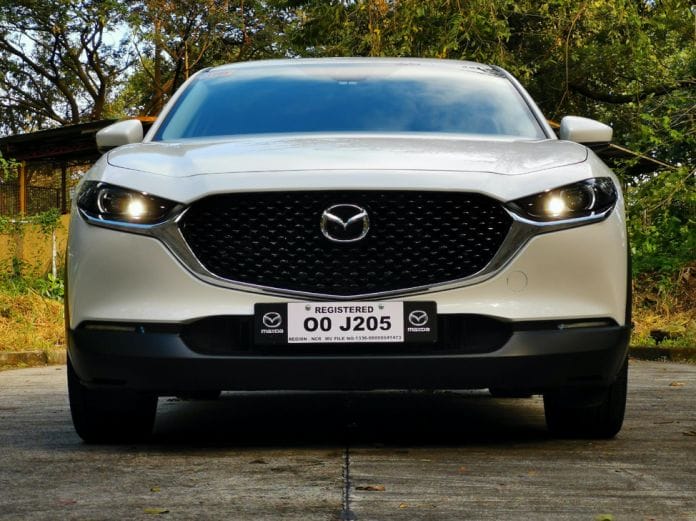
The cladding I criticized earlier? They won’t mind it, the same way iPhone users turn a blind eye on the notch because they like the harmony between the hardware and software. People put up with it because they love the rest that it comes with. It’s the same for the CX-30. The stitching that accentuates the interior’s curves, the precision of the steering, the floor-mounted throttle, easy control your Apple CarPlay or Android Auto without reaching the screen, the logical design of the AC controls, cornering with confidence – every detail and spec adds up to a great experience. The CX-30 is unlike any other in its class.

